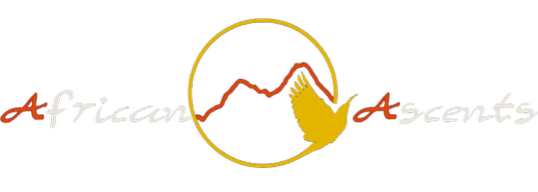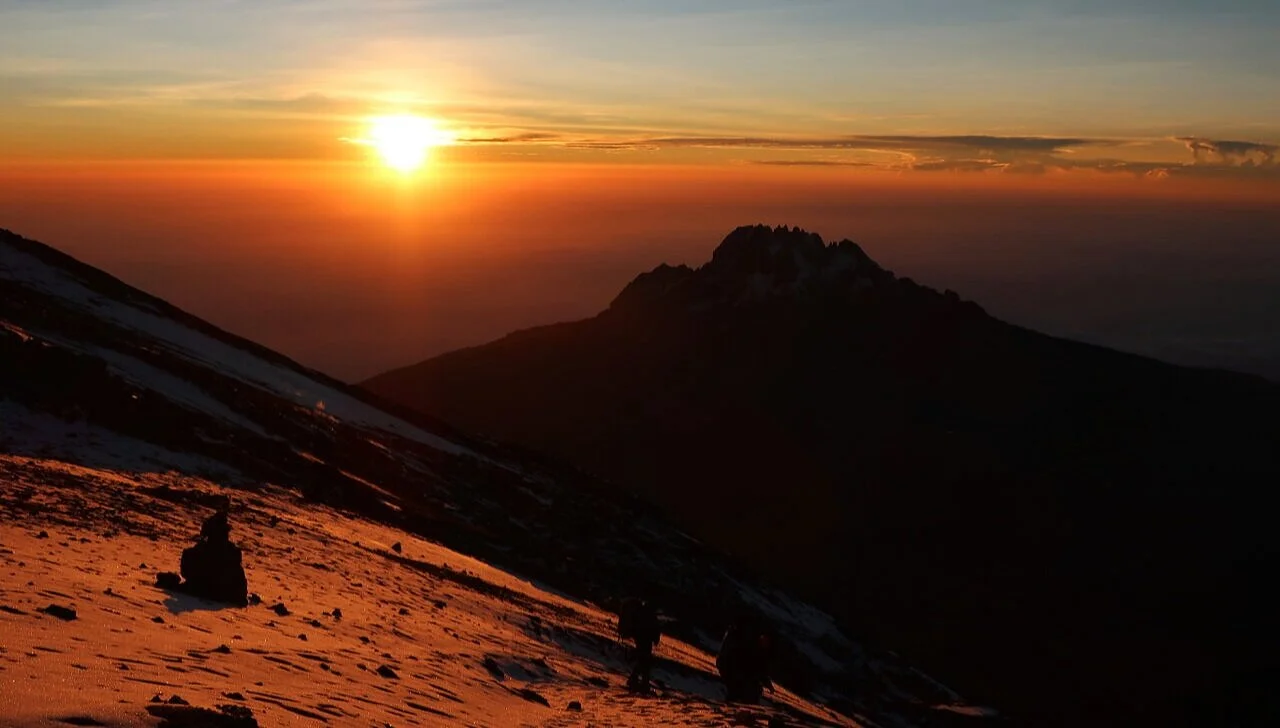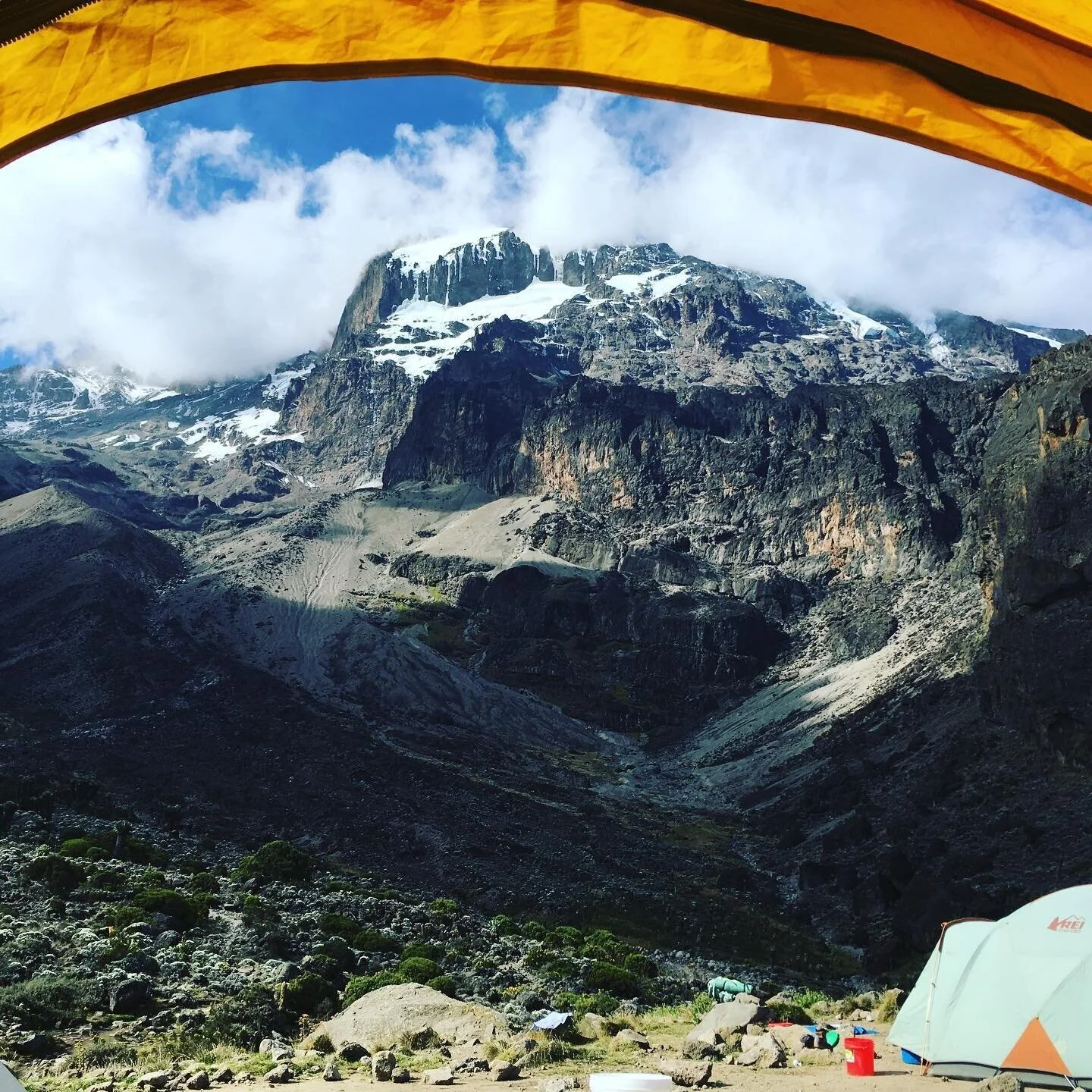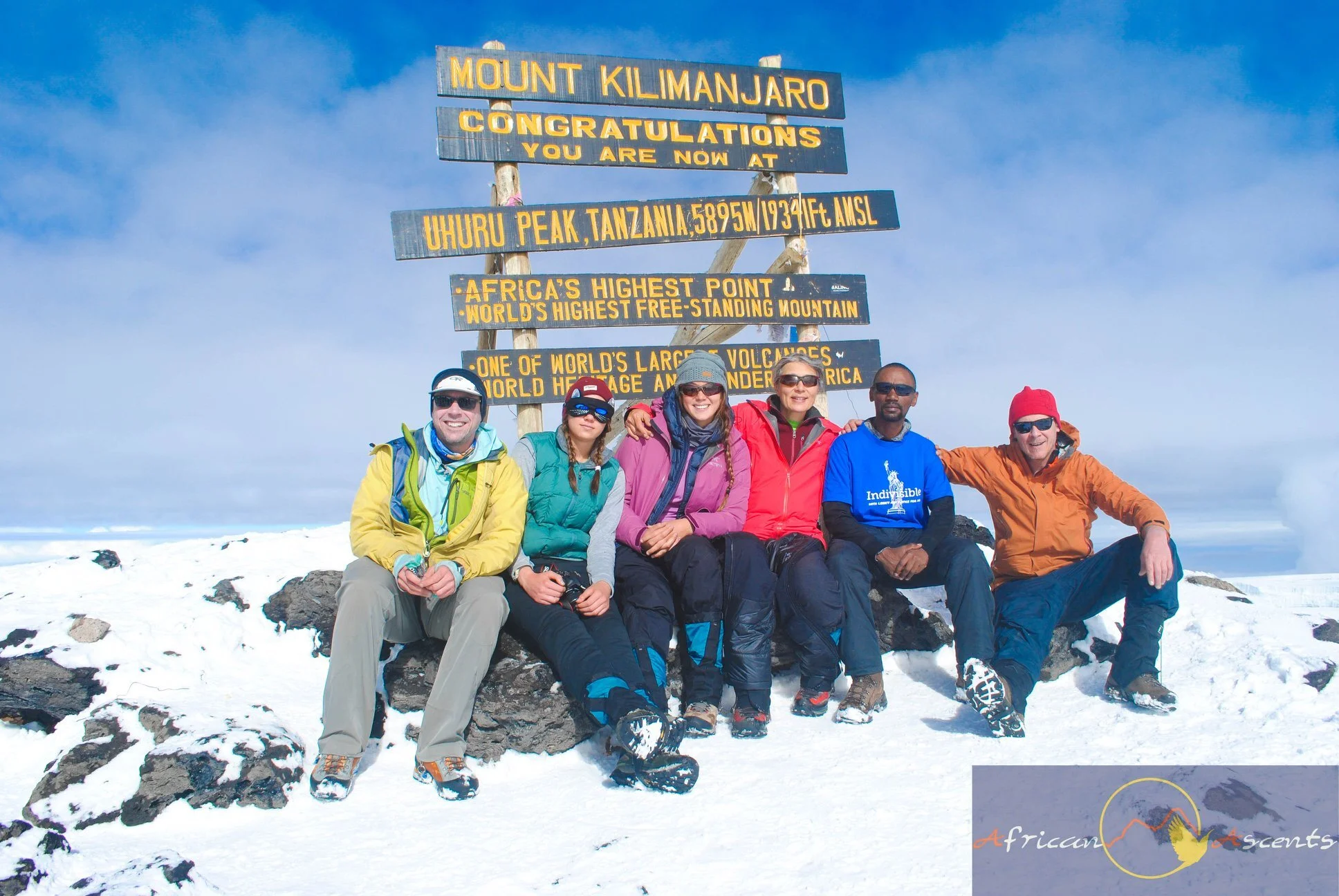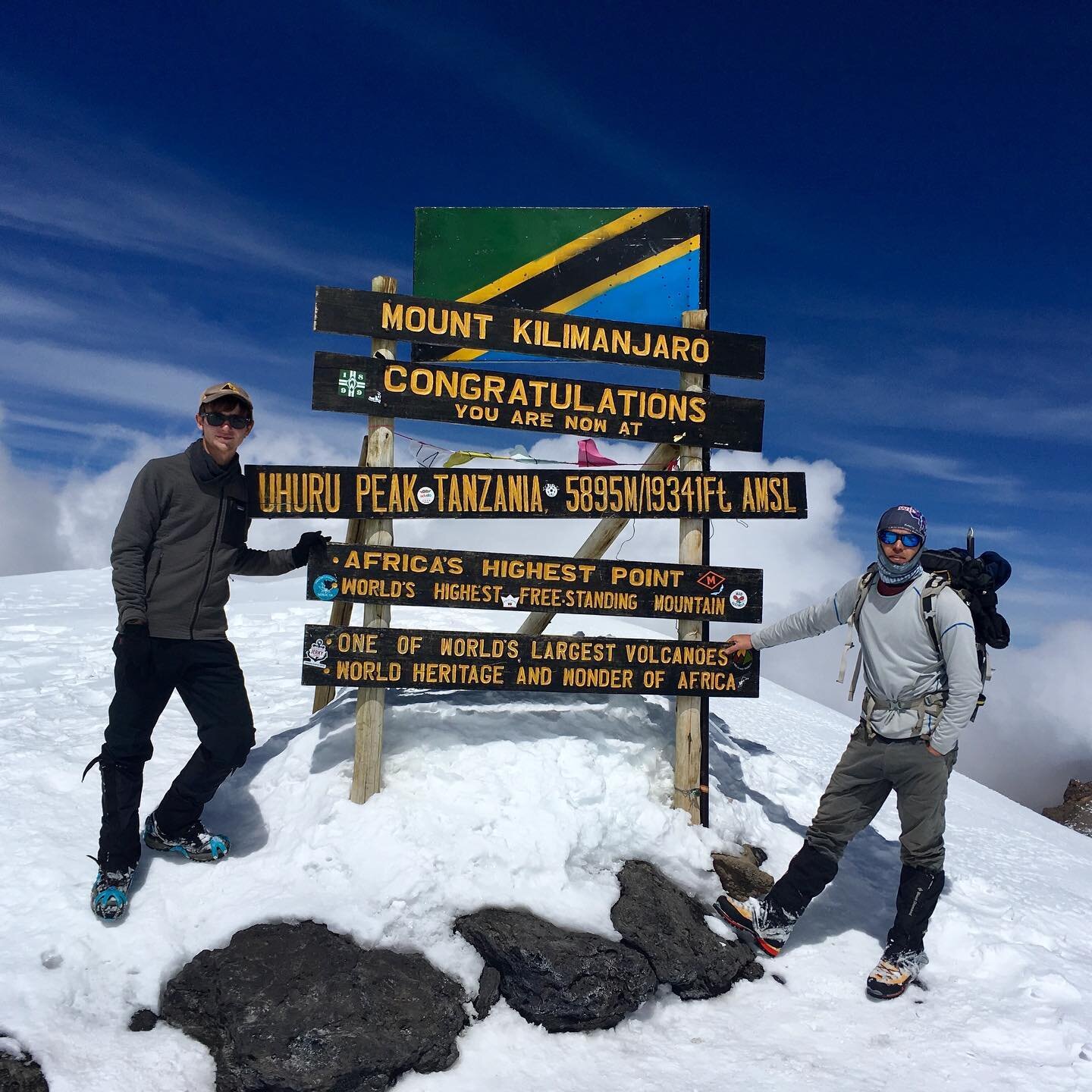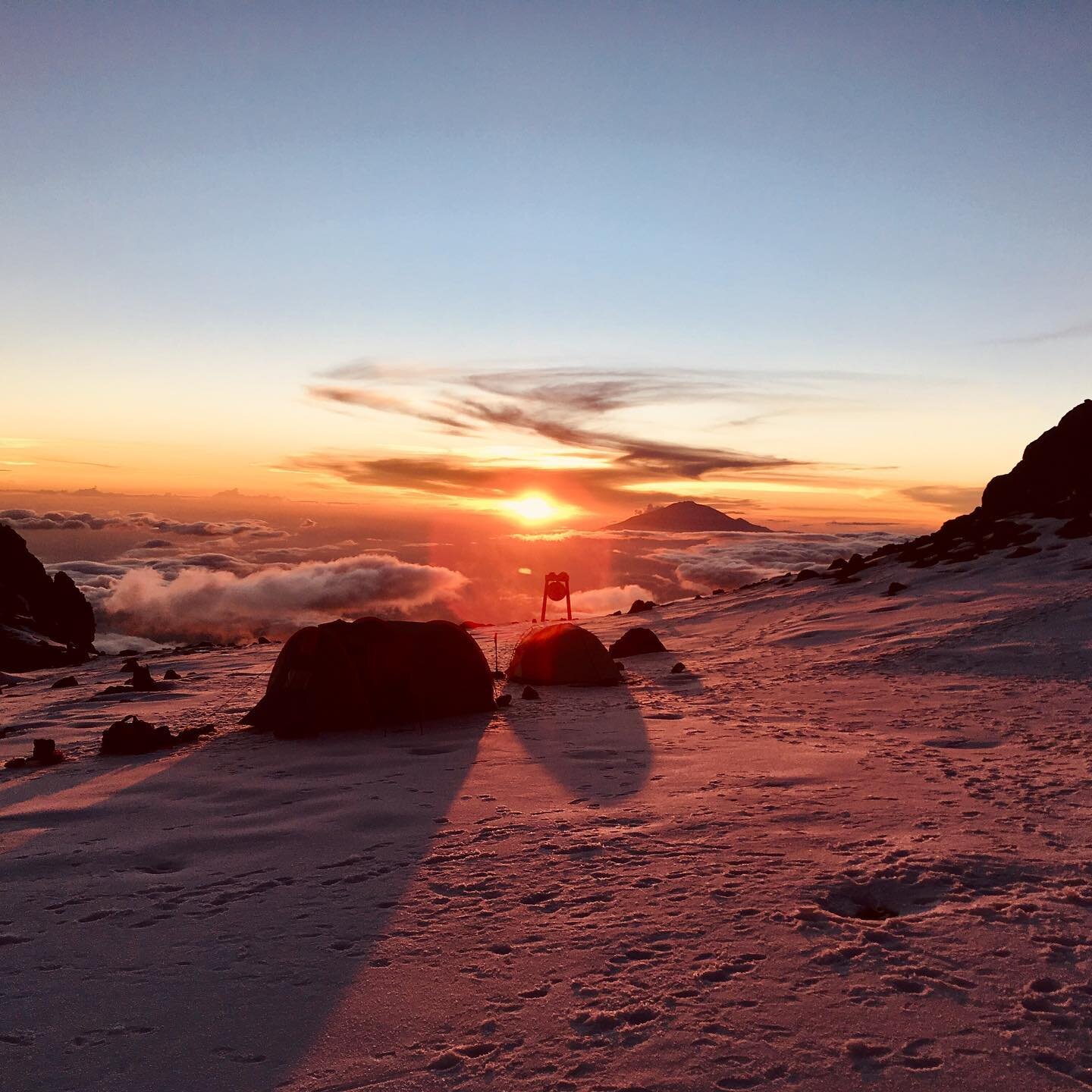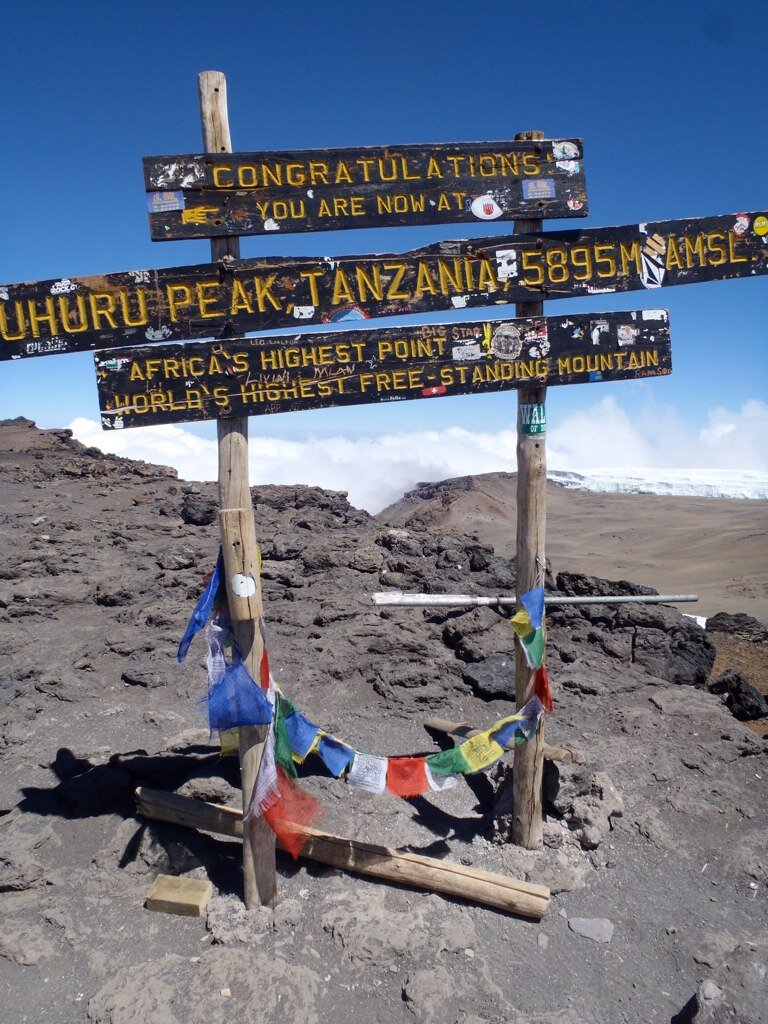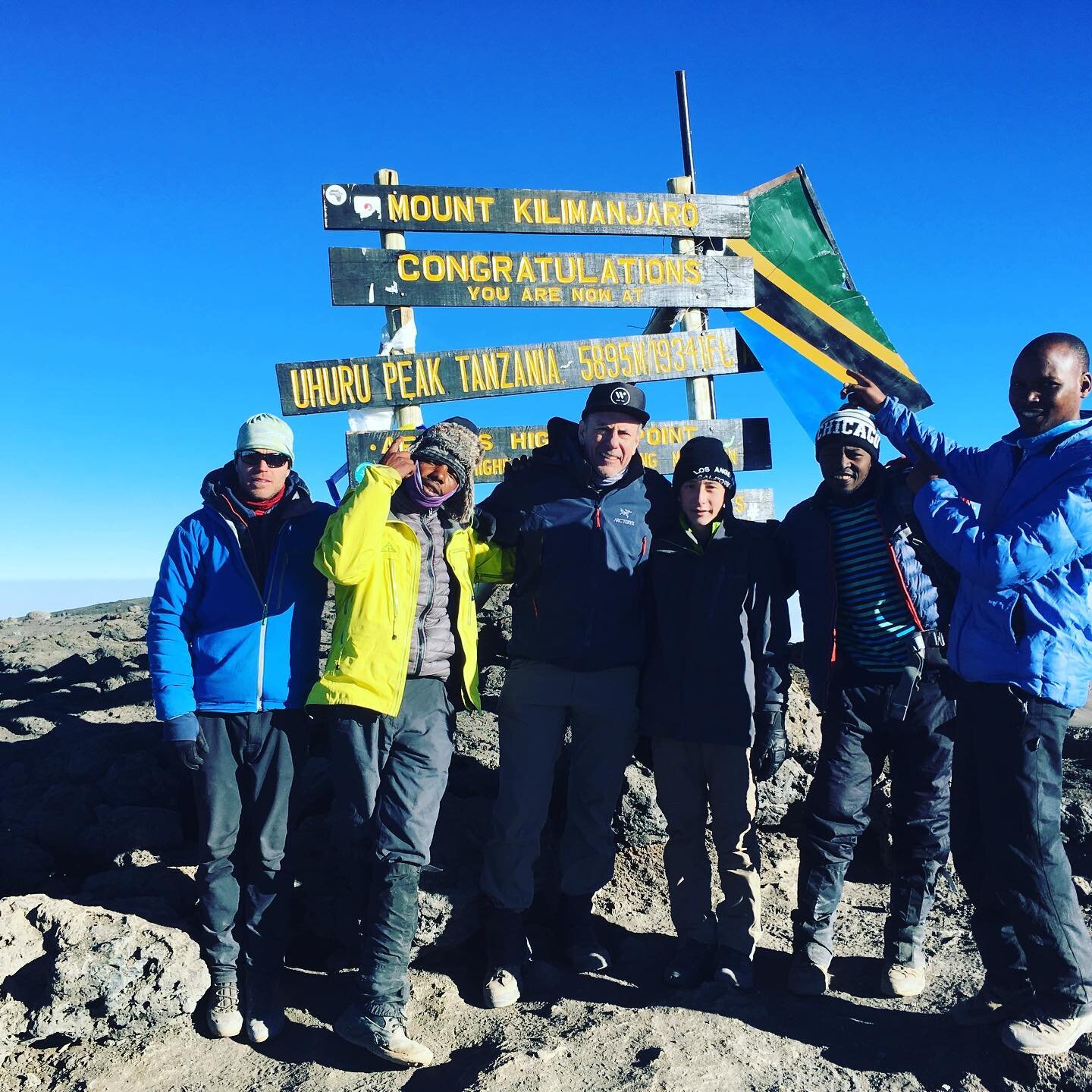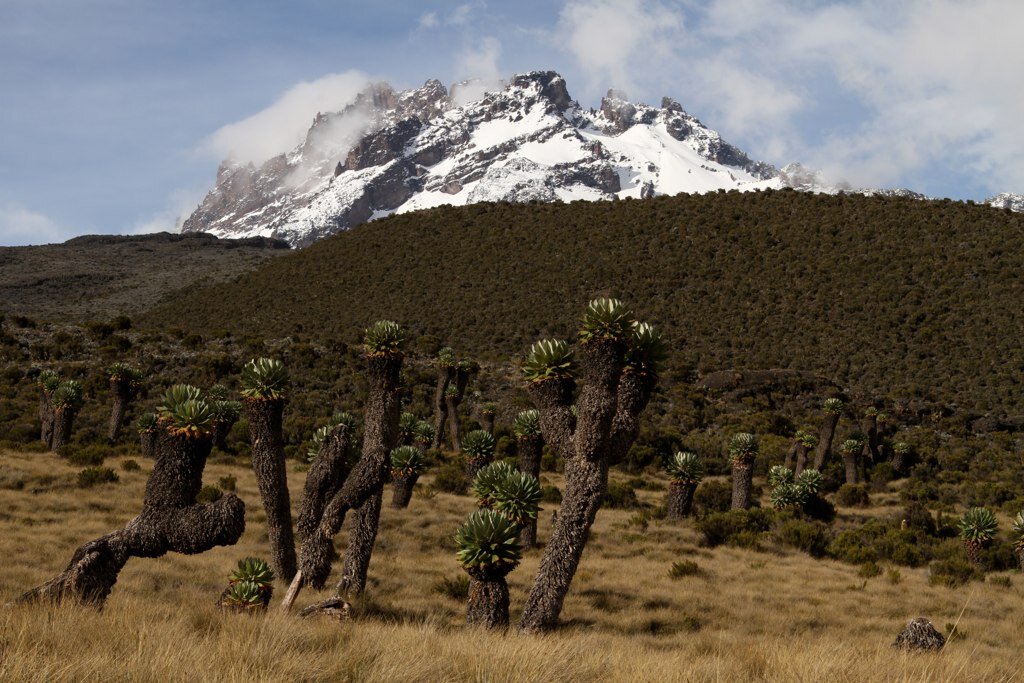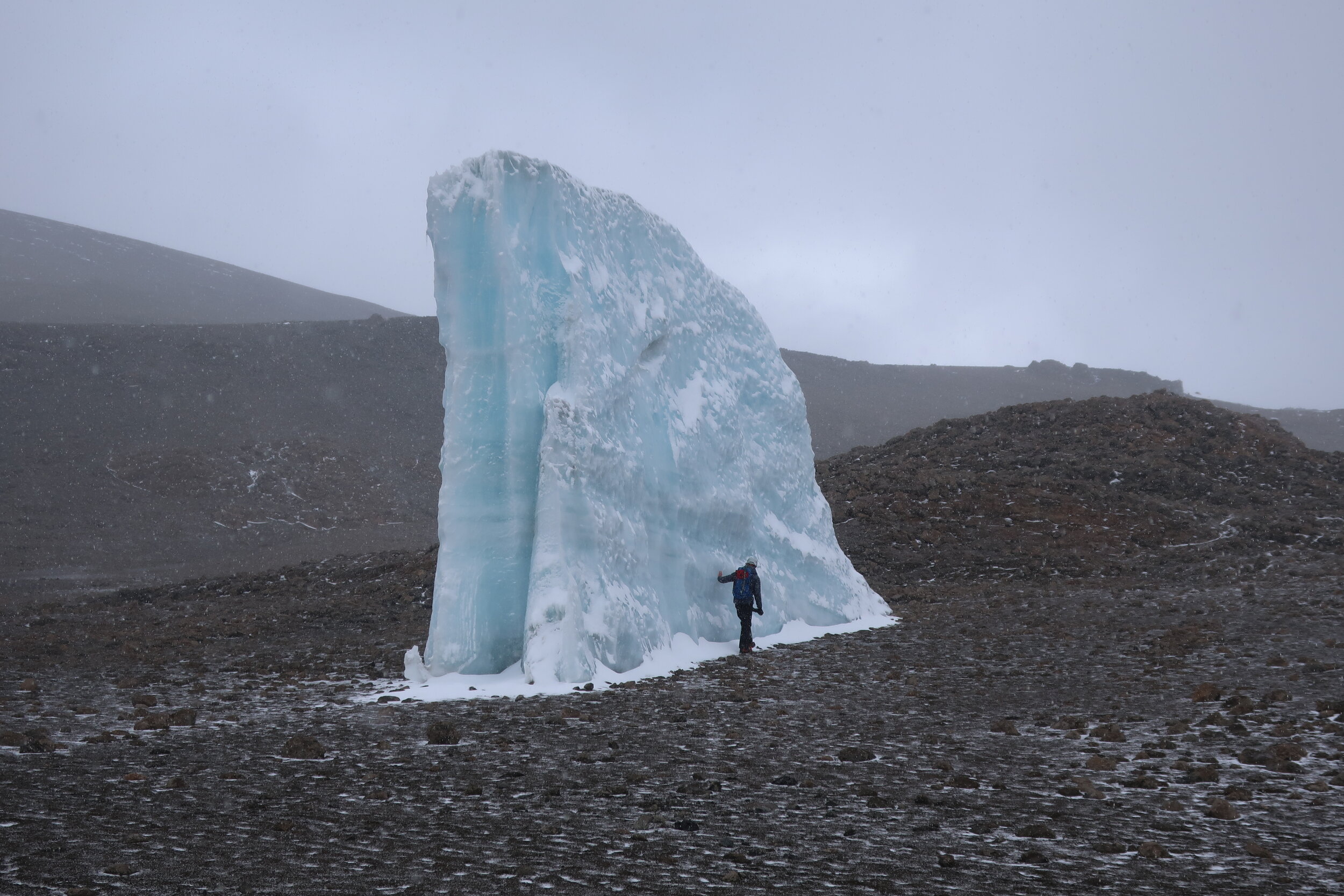Preparing to climb Mt Kilimanjaro
Mount Kilimanjaro is located in the northern part of Tanzania and is the highest mountain in Africa at 5895m (19,341ft) above sea level. It is one of the “Seven Summits” – the highest peaks on each continent.
If you’re reading this you are probably considering climbing Kilimanjaro, or have already decided you’d like to climb Kilimanjaro. It is a spectacular hike and a great introduction to the world of high altitude mountains.
Sunrise over Africa
So what does it actually take to climb Kilimanjaro, and how can you best prepare?
We’ve tried to cover most of the essentials below, and have included a few useful videos on packing and gear for the mountain. If, after reading this, you have a question we haven’t answered please get in touch via email and we’ll be happy to advise you further.
How to prepare for Kilimanjaro
It goes without saying that Kilimanjaro is a big mountain and deserves a healthy level of caution and preparation. It is higher than any mountain in Europe, and in North America only Denali & Mt Logan are higher. With the right preparation and understanding of what you will be putting your body through every day, however, it can be a thoroughly enjoyable experience and a trip that is certainly doable by most reasonably fit hikers.
“With the right preparation...it can be a thoroughly enjoyable experience and a trip that is certainly doable by most reasonably fit hikers”
Physical Preparation
Kilimanjaro is a non-technical mountain, meaning that you don’t need any ropes or special mountaineering equipment to climb it and you don’t need to be a mountaineer to attempt the summit. That’s not to say the climb up to nearly 6000m above sea level will be a walk in the park. You’ll definitely be challenged physically. Expect some long days of walking, particularly on summit day, and some steep and uneven ground.
Preparing your body for this ahead of time will certainly help both physically and mentally. Generally what you are aiming for is getting used to spending long periods of time on your feet walking while also improving your overall fitness and strength.
If you’re someone who hikes often and is used to steep climbs and rough ground then you may find that you don’t need to do much more than spend your weekends on your favourite trails. For a lot of people, though, this is a bit out of their usual comfort zone and might require a bit more training and preparation.
Don’t worry – if you are imagining painful training sessions and endless nights in the gym right now that’s not what we are going to suggest. If that’s your thing then by all means go for it, but you can also train for Kilimanjaro outdoors and without paying gym fees.
Try to start at least a few months in advance and make this a gradual process. Start with some short walks and hikes and, as your fitness improves, gradually increase the distance. As you gain confidence try to choose hikes that include some steep climbs and descents as well as some rough or uneven ground. If you’re struggling to know where to start with finding hikes, many local hiking groups are happy to offer advice or may encourage you to join them on group hikes. It can be a fun and social way to train.
“Try to start at least a few months in advance...start with some short walks and hikes and gradually increase the distance...make sure to try a few hikes while wearing the boots and daypack that you will use on the mountain.”
Some people do choose to sign up to a gym to do some of their training, especially if they are trying to train during winter or in a cold climate. If you decide to go this route then try to work in a combination of cardiovascular fitness as well as strength training. Inclined walking on a treadmill or stair machine is great training for your legs, and you can even do this with a backpack on as you get closer to your trip. Any classes that get you moving and work on your core strength will also help with your overall fitness for the mountain.
As you get closer to your departure date, make sure to try a few hikes while wearing the boots and daypack that you will use on the mountain. Read more on this in the equipment section.
Mental Preparation
There will be times on this trip that you will find challenging but the reward of spectacular views and the sense of achievement on reaching your goal is definitely worth it!
Looking up to Kilimanjaro’s glaciers from Baranco camp
Knowing what to expect on a day to day basis will help you prepare mentally. Read through your itinerary and get a sense for how long you will be walking each day ahead of time. Your guides will brief you on the mountain each night as well.
If you haven’t yet chosen an ascent route or itinerary take some time to look at the various options. While it is always a balance between limited holiday time and budget while allowing as long as possible to acclimatise to the altitude, we recommend choosing a longer itinerary if you are able. On average success rates for summiting Kilimanjaro nearly double when you compare an 8 day trip to a 6 day trip*. While adding a day or two to your trip will add slightly to the cost, it may also make the difference between you successfully reaching your goal or having to turn back due to altitude sickness. It will also allow you to enjoy the trip a lot more, with shorter days of walking, fewer altitude symptoms (headache, nausea), and a much lower risk of serious altitude sickness.
(*based on Kilimanjaro National Park data collected from all routes and companies in 2006)
Knowing that you’ve put in the physical training will help you to feel confident on the mountain. Trust your fitness and capabilities. Most importantly, listen to your guides – they will help you to set a nice slow pace as you climb. “Pole pole”, meaning “slowly” will be the first phrase you learn in Kiswahili and you will hear it often! This allows your body time to adjust to the altitude.
“Most importantly, listen to your guides - they will help you to set a nice slow pace as you climb. “Pole pole”, meaning “slowly” will be the first phrase you learn in Kiswahili and you will hear it often!”
Summit Day
On Kilimanjaro most summit days start just after midnight. The morning that you set out on your summit bid can take up to 8 hours of walking to reach the “Roof of Africa”. After summiting, depending on your itinerary, you may have another 6 hours down to your camp. This is a long day for anyone, but by this time you will be well acclimatised and your guides will give you plenty of rest along the way. The adrenaline rush of reaching the top and watching the sunrise over Africa will give you an energy boost to get you back to camp. Pack plenty of snacks!
Equipment
““There’s no such thing as bad weather, only inappropriate clothing” - Sir Ranulph Fiennes”
It’s important to get this right before you leave home as finding new outdoor equipment can be tricky in a foreign country. It is possible to rent equipment as long as you give adequate notice, however it’s never going to fit quite as well as your own.
We recommend going through the gear list carefully in advance so that you can purchase (or dig out of your closet) what you need well ahead of time. Give yourself time to try out your new equipment before you travel. This is especially important if you are buying a new pair of hiking/walking shoes or boots.
If you have an old pair of boots that you have always relied on but aren’t used very often make sure that they are still in good condition. It isn’t uncommon to see someone’s trusty walking boots fall apart early on in the trip, often because they’ve been sitting in the basement for too long.
Despite Tanzania being known for its warm climate and sunshine it can get surprisingly cold up on the mountain. You will enjoy your trip, and particularly your summit day, much more if you have packed comfortable warm clothes. Have a look at the gear list for essential and suggested items. The videos below on packing and what to carry in your daypack might also help you as you plan for your trip.
Walking poles are a great piece of equipment to bring along on Kilimanjaro
Altitude
What about Altitude Sickness? Is there anything you can do ahead of time to prevent it?
If you’ve done a little bit of reading about Kilimanjaro one of the things you might have read about is Altitude Sickness or Acute Mountain Sickness (AMS). AMS can range from mildly annoying symptoms (slight headache, loss of appetite) to life threatening illness. If you choose a reputable company to climb Kilimanjaro with then your guides will be well trained to monitor you for symptoms of AMS and will know when it is safe for you to continue to climb and when you might need to turn back.
“The best way to improve your chance of summiting Kilimanjaro and avoid being turned around by altitude sickness is to give yourself as much time as possible on the mountain to acclimatise slowly.”
The biggest single factor in reducing the chance of getting severe AMS is time. The longer you take to go up, the less likely you are to get sick. There is less oxygen available as you go higher (approximately 50% less in each breath at 5000m compared to sea level) and your body needs time to get used to this. On a Kilimanjaro climb that summits on day 8 about 40% of people will have some mild symptoms of AMS on summit day. On a Kilimanjaro trip that summits on day 5 (usually sold as a 6 day trip), more than 70% of people will have symptoms. This is why we encourage you to choose a longer itinerary if you can afford the time and money.
It is common when climbing Kilimanjaro to have some mild symptoms of AMS including mild headache, decreased appetite or mild nausea, and some difficulty sleeping. Most AMS symptoms are not life threatening, and your guides should be well trained to recognise worrying symptoms and turn you around if needed. The treatment for AMS is to descend to a lower altitude.
Simple measures that you can take to try and reduce your risk of altitude sickness include making sure you are fit before you come to climb the mountain, staying well hydrated, walking slowly each day, and getting plenty of rest and sleep. That said, altitude sickness/AMS is unpredictable and you can be the youngest fittest member of the group and still be the one to feel the altitude the most. This is the main reason it is important to choose a good company to climb the mountain with as their guides will monitor you closely and make sure you stay safe and healthy throughout your climb.
More information on packing and equipment in our videos below
